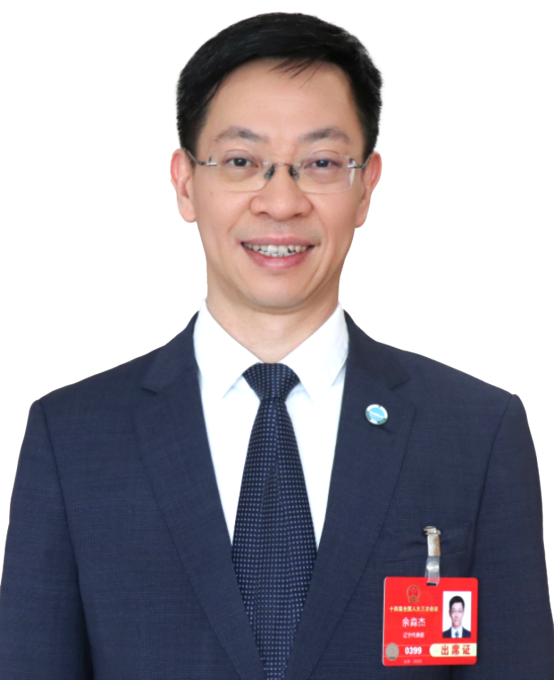Source: China Business Journal
Link: http://www.bmronline.com.cn/index.php?m=content&c=index&a=show&catid=9&id=14092

The Fourth Plenary Session of the 20th Central Committee of the Communist Party of China reviewed and approved the “Proposal of the Central Committee of the Communist Party of China on Formulating the 15th Five-Year Plan for National Economic and Social Development” (hereinafter referred to as the “Proposal”), drawing a clear blueprint for China’s economic and social development over the next five years and beyond.
Regarding this, Yu Miaojie, President of Liaoning University and Fellow of the International Economic Association (IEA), provides an in-depth interpretation. He believes that the Plenum’s emphasis on basing development on the real economy, integrating innovation, balancing investment in people and physical assets, and offering a new dialectical unity in explaining the relationship between demand and supply are all highlights of this “Proposal”.
The “Three Transformations” Upgrade for the Real Economy
The Plenum proposes building a modern industrial system and consolidating and strengthening the foundation of the real economy. It emphasizes focusing economic development on the real economy, adhering to the directions of intelligentization, greenization, and integration. By accelerating the building of a strong manufacturing country, a quality powerhouse, and a space, transport and cyber power, this will maintain a reasonable proportion of manufacturing, and construct a modern industrial system with advanced manufacturing as the backbone.
Yu Miaojie points out that the “Proposal” continues the consistent emphasis on the real economy as the foundation of the modern industrial system. On this basis, it provides a more specific and forward-looking deployment for the development of the real economy, with the core being the promotion of industrial upgrading through the “Three Transformations”: intelligentization, greenization, and integration.
Among these, “intelligentization” and “digitalization” represent ongoing strategic directions. However, the equal emphasis on “greenization” and "integration” constitutes a significant new aspect of this “Proposal”. In particular, the direction of “integration” highlights deep cross-sectoral and cross-industrial convergence as key to enhancing overall competitiveness.
Regarding the real economy, the Plenum proposes five key pillars: “a strong manufacturing country, a quality powerhouse, a space power, a transport power, and a cyber power.” Among these, a strong manufacturing country is the foundation, aiming to improve product quality, specifically manifested in “sky” (space), “ground” (transport), and the “invisible” (cyber) realms serving the real economy, thus forming a three-dimensional framework supporting high-quality development.
Simultaneously, the “Proposal” consistently emphasizes the dual-drive strategy of “transforming and upgrading traditional industries” and “cultivating and strengthening emerging and future industries”, clarifying the focus areas such as artificial intelligence (AI), new materials, new energy, information technology (IT), high-end equipment, and quantum technology.
New Balance Between Investment in Physical Assets and Investment in People
The Plenum proposes building a strong domestic market and speeding up the creation of a new pattern of development. It emphasizes adhering to the strategic basis of expanding domestic demand, closely integrating efforts to benefit people’s livelihoods and boost consumption, and linking investment in physical assets with investment in people. It calls for using new demand to guide new supply and new supply to create new demand. This can foster a positive interaction between consumption and investment, thereby enhancing the endogenous dynamism and reliability of the domestic cycle. Efforts should be made to vigorously boost consumption, expand effective investment, and resolutely remove bottlenecks hindering the development of a unified national market.
Yu Miaojie notes that the “Proposal” clarifies that adhering to benefiting people’s livelihoods and boosting consumption is the fundamental point for building a unified national market, emphasizing that the ultimate goal of market development is to improve people’s wellbeing. Furthermore, the “Proposal” creatively introduces the new overarching concept of combining “investment in physical assets” and “investment in people”. This formulation represents a further deepening and systematization of the concept of “investment in people” first proposed in the 2025 Government Work Report.
Yu Miaojie gives an example: Suppose the government has 500 million yuan in public funds for investment. This sum could be used for building one kilometer of subway or for talent development. At the current stage, investing in the subway might be considered “adding flowers to brocade” (making something good even better), whereas cultivating talent and strengthening the contingent of personnel would have a greater marginal effect and a more significant impact on promoting economic development.
Finally, Yu Miaojie indicates that the “Proposal” provides a clear dialectical unity in explaining the relationship between demand and supply, namely using new demand to guide new supply, while simultaneously using new supply to create new demand. He believes this thesis goes beyond the single perspective found in traditional Western economics - either “demand creates its own supply” (Keynesianism) or “supply creates its own demand” (Say’s Law) - and clarifies the synergistic interaction between the demand and supply side in China’s economic development. He states that future economic development will be a virtuous cycle: by exploring and creating new demand (such as green consumption, digital services), industrial upgrading (new supply) is stimulated and guided.